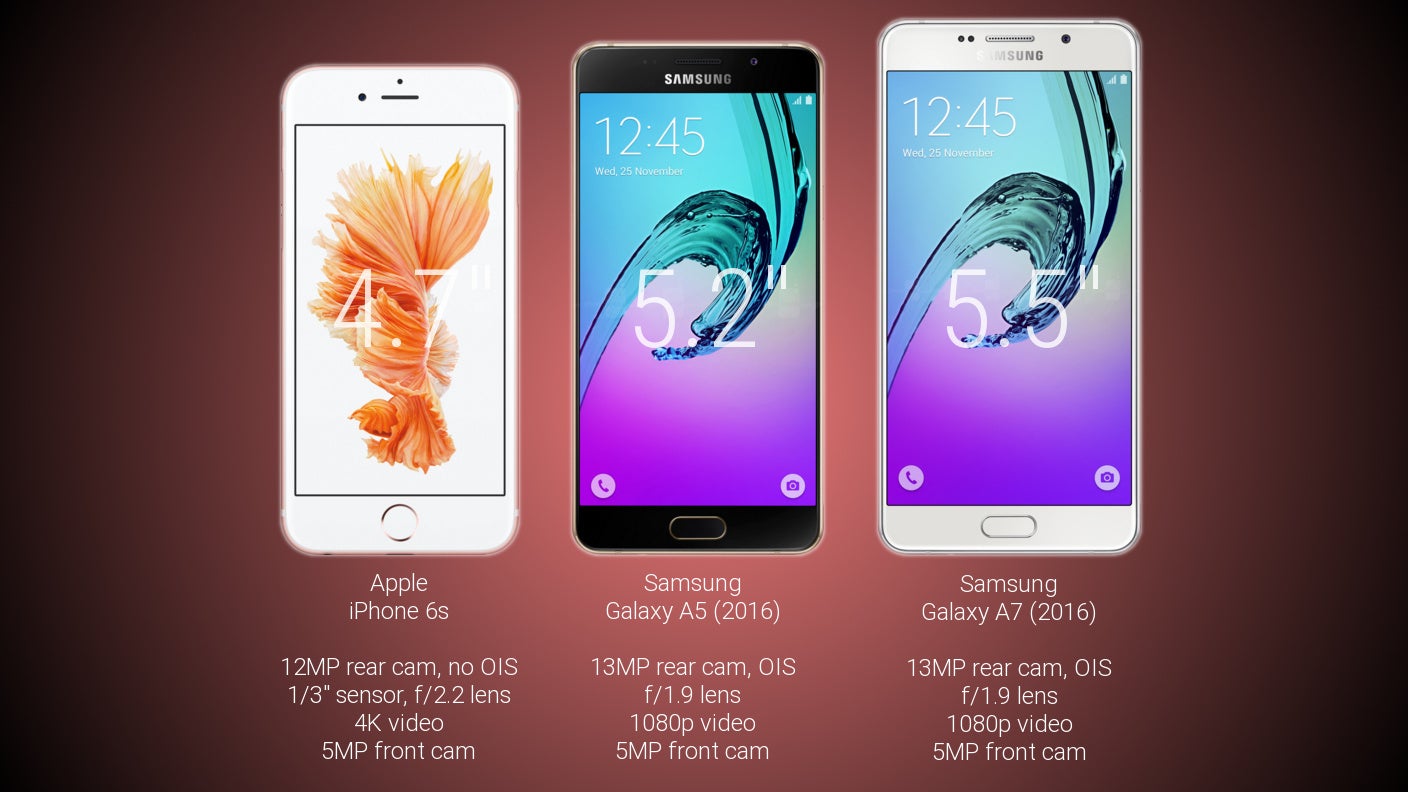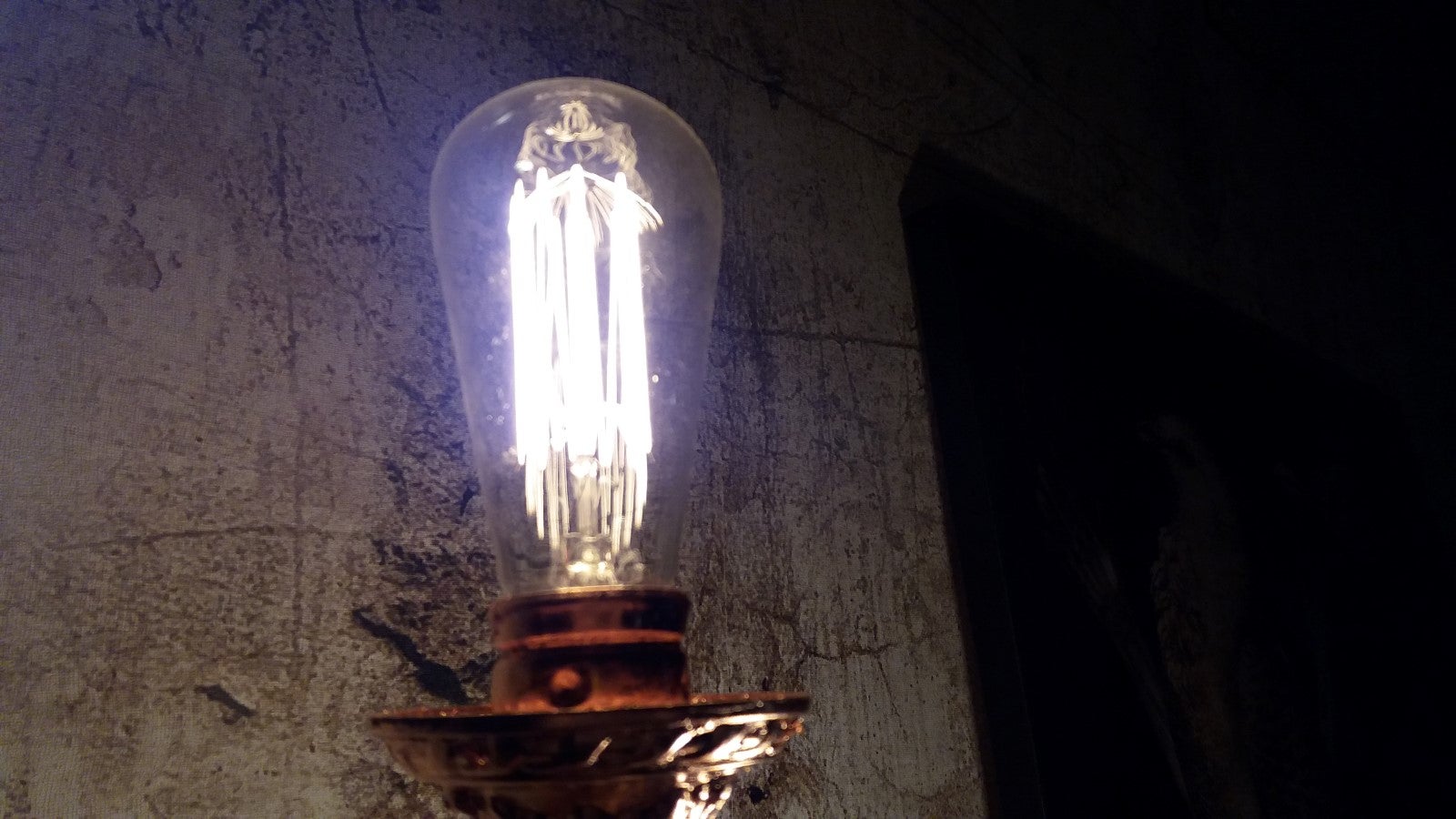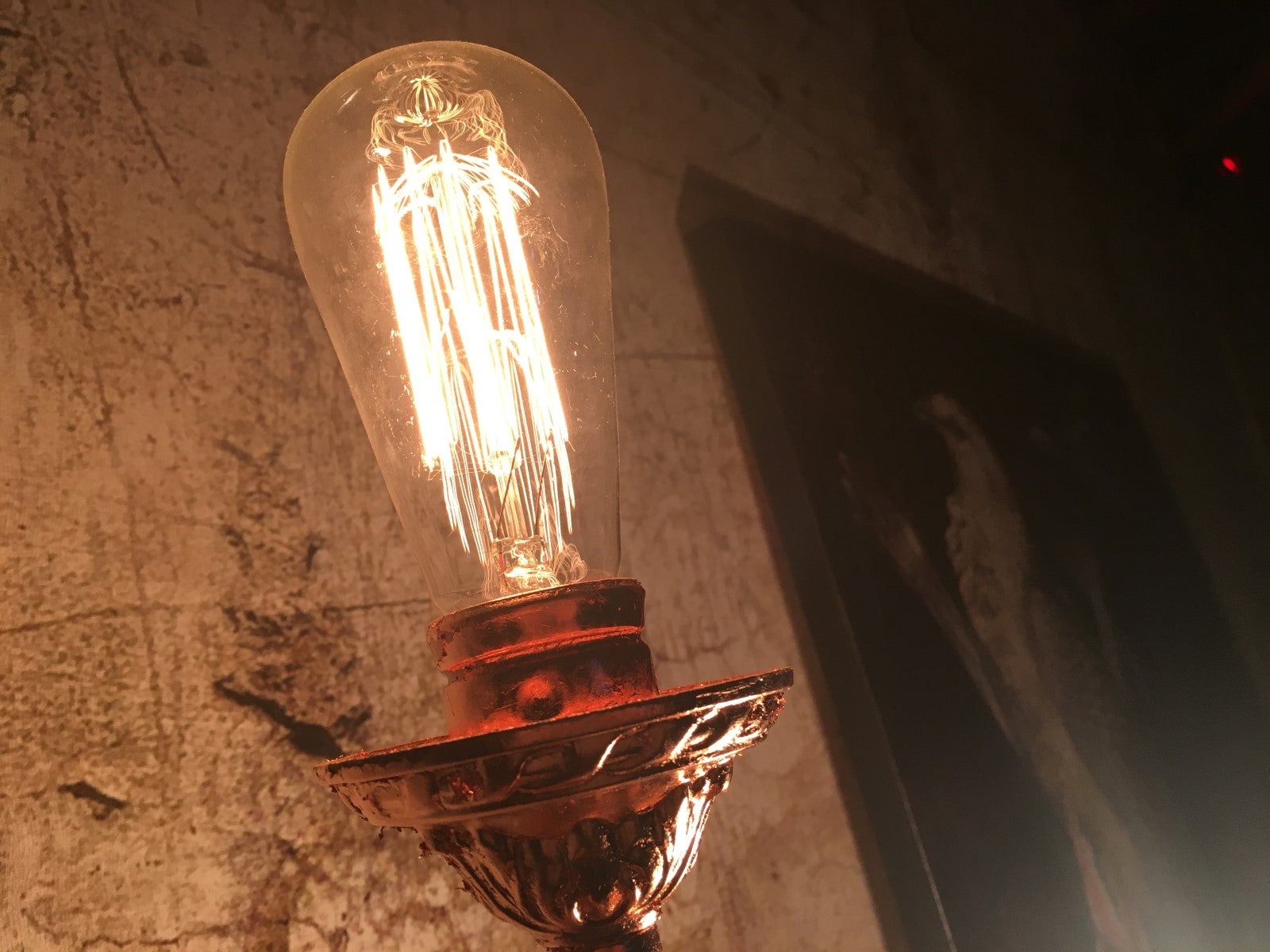Samsung Galaxy A7 (2016) vs Galaxy A5 (2016) vs Apple iPhone 6s: quick camera comparison
You can now read:
- iPhone 7 vs iPhone 6s Galaxy S7 Edge vs LG G5 Camera Comparison
- Sony Xperia XZ vs Samsung Galaxy S7 Edge vs Apple iPhone 6s Plus vs LG G5 Camera comparison
- Google Pixel XL vs iPhone 7 Plus vs Galaxy S7 Edge vs LG G5 Camera comparison

Samsung's new, 2016 Galaxy A series have arrived and we have the Galaxy A7 (2016 edition) and Galaxy A5 (2016) undergoing our testing. We were particularly curious to see how good are their cameras and to get a better idea, we compare them against each other and against the popular Apple iPhone 6s for reference.
The Galaxy A7 (2016) and Galaxy A5 (2016) are shockingly similar: both have the same stylish design, just differing slightly in terms of size as the A7 is the larger, 5.5" phone, while the A5 has a 5.2" display.
In terms of camera specs, the two are also identical: both have a 13-megapixel main camera with the same firmware version, the same, wide f/1.9 lens, both have optical image stabilization (OIS), and even the selfie cameras are the same, 5-megapixel sensors.
We were particularly curious to see if this similarity results in equally similar photos and how they compare against one of the best camera phones on the market, the iPhone 6s.

Apple iPhone 6s, Samsung Galaxy A5 (2016), Galaxy A7 (2016) camera specs
General impressions
After shooting for a few days in various conditions with both new Galaxies, there is one key conclusion: the Galaxy A7 (2016) and Galaxy A5 (2016) have identical cameras. We could not find any meaningful difference in image quality between the two among all of our videos and images, so we'll just conclude that the A7 (2016) and A5 (2016) use one and the same camera.
And it's a pretty fast and good camera. The Quick Launch shortcut (double click the home screen) to launch the camera works wonders for those impromptu moments. The camera menu is the same as in the Galaxy S6 and Note 5: with no fluff and convenient separate buttons for video and image capture, as well as a comfortably placed in the bottom button to switch between the front and rear cameras.
Quick image quality comparison
#1: Mermaids
The first image we look at is a statue of two mermaids in the park. The Samsung Galaxy A5/A7 does not capture a bad image per se, but it looks a bit washed out and bland. The highlights are also blown out of proportion. The Apple iPhone 6s, in comparison, captures a much more dynamic image that is more interesting to look at. It preserves the highlights better, while the whole image is a bit darker. It's also interesting that the iPhone goes all the way down to ISO 25, while the Galaxy shoots at ISO 80.
Mermaids
#2: Copernicus
The second image is of another statue, this time of Nicolaus Copernicus, on a natural background with the sky also coming in the frame. The Galaxy captures a very good looking image with natural colors that are close to the ones in reality. The iPhone goes for the more impactful image: colors are more saturated than they were in real-life, but while not completely realistic, the image looks more punchy and the blue sky looks gorgeous, while that nice blue color is nowhere to be seen on the Galaxy.
Copernicus
#3: Closeup on a tungsten lamp
We wanted to share this closeup because the lamp looked so mesmerizing in real life. At the near pitch black conditions of this club, the Galaxy has a hard time focusing on it and gets the colors grossly wrong (we shot this particular image at 16:9 aspect ratio, it was the default setting for the phone). The iPhone, on the other hand, focused quickly and captured a stunning image with a lot of detail, but most importantly - it preserved those colors as we saw them there.
Tungsten lamp
#4: At the bar
Another challenging scene was the bar. Even though the Galaxy seemed to be in focus, on a big screen it's obvious that it missed the focus here. The iPhone captures a sharper, more pleasing image. That's particularly interesting because the Galaxy has optical stabilization, while the iPhone does not, yet the iPhone was able to shoot at ISO 640 and a neat 1/17 shutter speed, while the Galaxy picked ISO 1250 at shutter speed of just 1/8 second, which was a disaster in terms of blurring.
At the bar
#5: Let me take a selfie
Finally, the inevitable selfie. There is one very clear difference between the two and it's not the resolution: it's the field of view. The Galaxy captures much wider selfies, so that you can easily fit your friends for that perfect shot, but when you are taking a selfie of just yourself (duh!), then you can't quite fit the frame unless you shoot from very up close. The iPhone has a narrower field of view that is better fit for pictures of your self, but it's hard to fit more people. The colors are also different: the Galaxy has a more natural color expression, while the iPhone has clearly oversaturated colors. You pick your favorite.
Let me take a selfie
Quick video quality comparison
When it comes to video recording, the Galaxy A7 (2016) and A5 (2016) can only capture 1080p video at 30fps, while the iPhone 6s is capable of recording in 4K.
That's a huge difference: the 4K iPhone video results in much sharper looking footage than the Galaxies, and it's something that you notice even when viewing the videos on a 1080p display.
Our initial impressions are that the iPhone has much wider dynamics and is able to deal much more effectively with challenging conditions. When the sun shines in front of the camera, the iPhone camera does not overblow the highlights and manages to deliver balanced footage, while the Galaxy is a good, but not excellent performer: it does get occasionally tricked and washes out highlights, or cannot preserve detail in the shadows to a huge extent.

Take a look at the camera samples from the Galaxy A7 (2016), Galaxy A5 (2016) and the Apple iPhone 6s right below, and stay tuned for our full review, where we will be able to give you our final conclusion on the camera quality.
You can now read:
- iPhone 7 vs iPhone 6s Galaxy S7 Edge vs LG G5 Camera Comparison
- Sony Xperia XZ vs Samsung Galaxy S7 Edge vs Apple iPhone 6s Plus vs LG G5 Camera comparison
- Google Pixel XL vs iPhone 7 Plus vs Galaxy S7 Edge vs LG G5 Camera comparison
Follow us on Google News






















Things that are NOT allowed:
To help keep our community safe and free from spam, we apply temporary limits to newly created accounts: